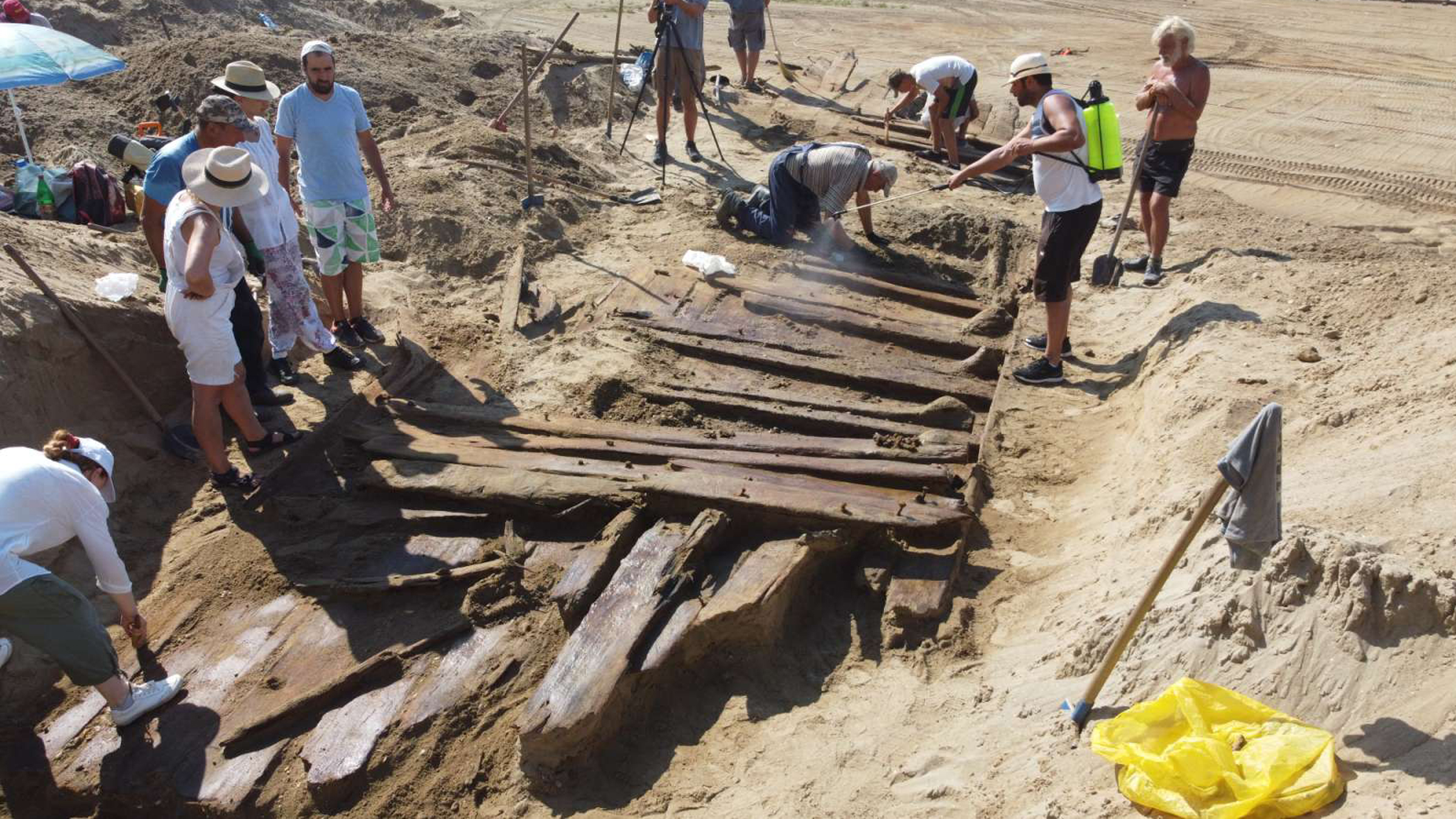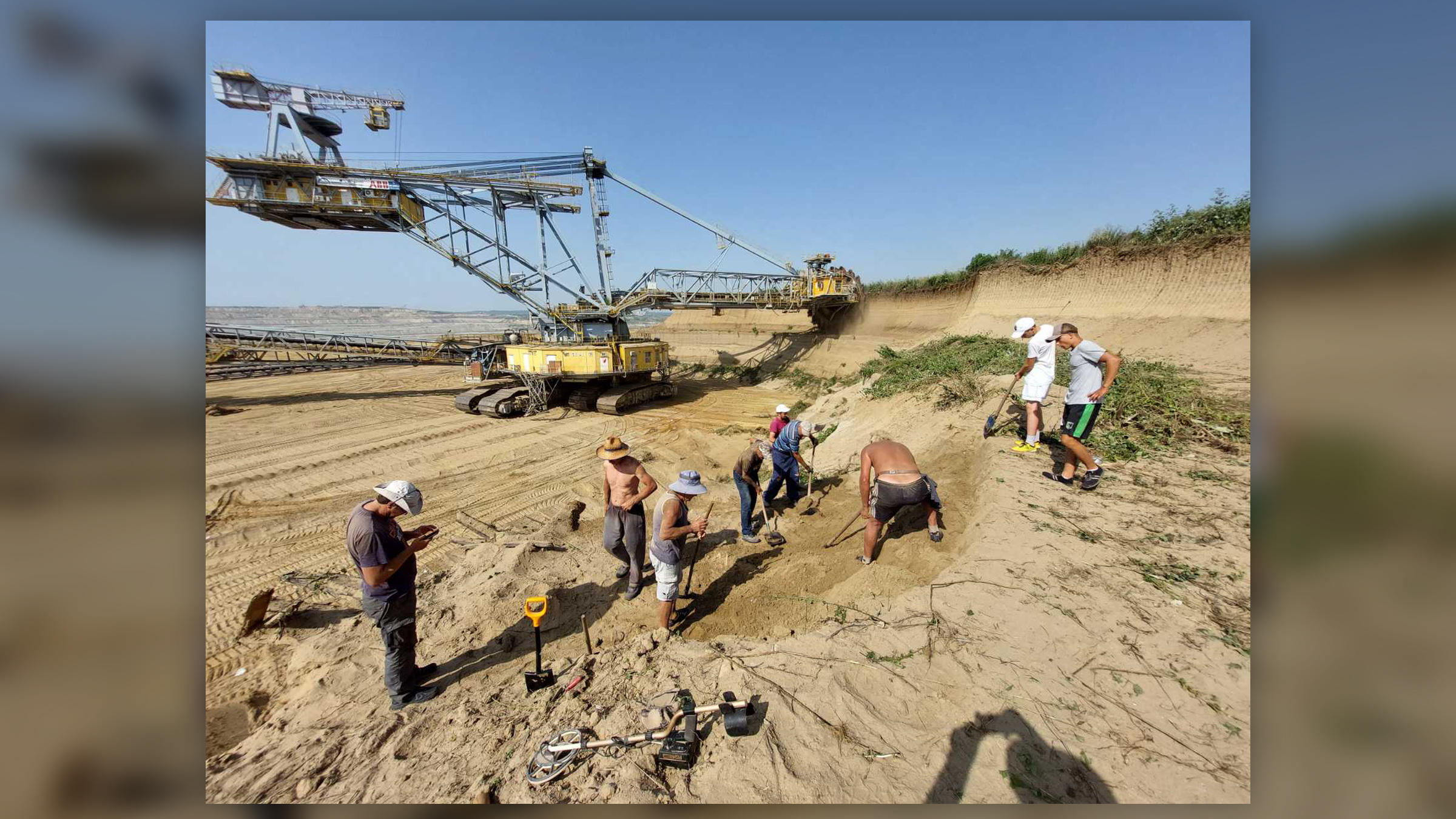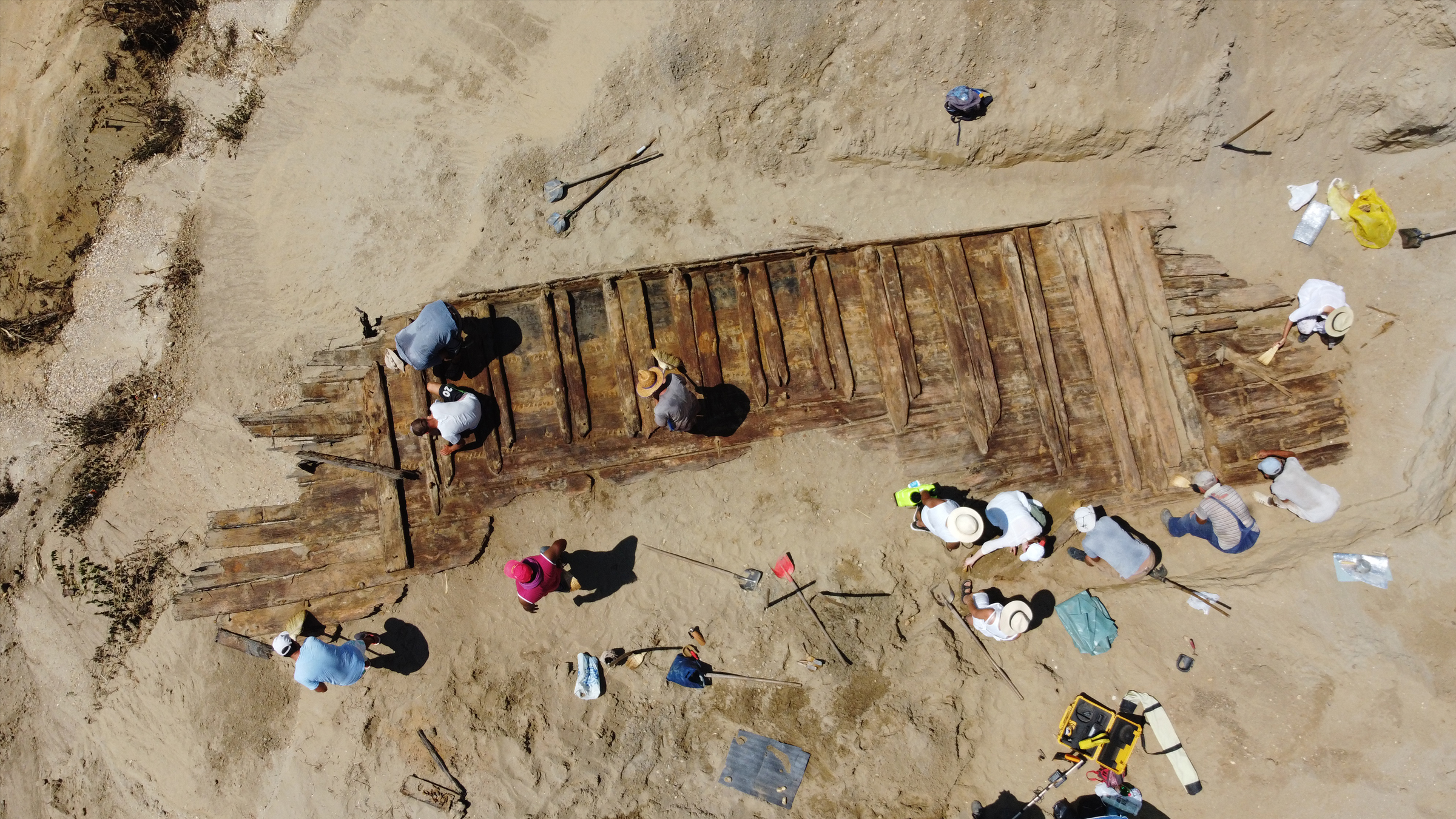Ancient Roman boat from empire's frontier unearthed in Serbian coal mine
Coal miners found the remains of a Roman boat that likely supplied an ancient frontier city and military headquarters.

Coal miners in Serbia have discovered the remains of a large wooden boat likely used by the Romans to supply a nearby city and military headquarters on the empire's frontier.
Archaeologists are waiting for radiocarbon dates of wood from the remains, but they think it may be from the third or fourth centuries A.D. They suggest the ancient vessel carried supplies along small rivers between the Danube River and the Roman city of Viminacium about 1 mile (1.6 kilometers) away, which was established early in the first century A.D.
The ancient wreck was unearthed in late July at the Drmno surface coal mine near Kostolac, about 30 miles (50 km) east of Belgrade.
The wooden remains were buried in a layer of silt about 25 feet (8 meters) below the surface. The mine's coal seam is reached by cutting away the topsoil with a mechanical digger, and the wreck was found on the wall of the cutting.
The miners who found it then contacted archaeologists at the nearby Viminacium archaeological park, which is operated by the Belgrade-based Institute of Archaeology.
Organic materials like wood usually rots when exposed to air, but the wooden boards and the sand above them were damp, so it seemed that moisture had helped preserve the ancient vessel, a spokesperson told the Serbian website Sve o arheologiji.
Get the world’s most fascinating discoveries delivered straight to your inbox.
But after it was unearthed, "the great danger was the bright sun, which threatened to dry out the ship too quickly," so the archaeologist doused the remains with water as they excavated the wreck, the spokesperson noted.
Vital supply boat
The vessel was originally about 65 feet (20 m) long and about 12 feet (3.5 m) wide. It was flat-bottomed, like a barge, and the archaeologists think it was used to carry cargo between the Danube and Viminacium.
"It is likely that the barge was towed from the shore or driven by oars, and in suitable situations the ship could also use the wind to move, using an auxiliary sail," the archaeologists said.
The wreck is not the first ancient vessel unearthed nearby: The remains of similar boats were found in the area in 2020, indicating the region was once a navigable backwater of the nearby Danube.


Imperial frontier
Viminacium was a combined Roman settlement and military fort, and after A.D. 87 it was the capital of the Roman Empire's Upper Moesia (Moesia Superior) frontier province.
It was an important trading hub and a regional center of Roman culture. Archaeologists estimate Viminacium had a population of up to 45,000 people, making it one of the largest settlements in the Balkans at that time.
Several Roman legions were based at the fort there, and the people to the north were notoriously belligerent toward the Romans.
But the city and fort were destroyed by the Huns in 411, who ended Roman rule in much of Europe. Viminacium was rebuilt early in the sixth century by the Byzantine emperor Justinian the Great, but it was destroyed again in 582 by invading Avars from the Eurasian steppe.
Roman treasures
Viminacium's ruins were discovered in the 19th century, and it is now one of Serbia’s most important Roman sites, although it’s estimated that only a small percentage of it has been excavated.
Archaeologists have unearthed tens of thousands of artifacts there, including hundreds made from silver and gold, as well as richly decorated tombs, ancient workshops, palaces, temples, streets, plazas and fortifications; Roman baths; a track for racing chariots; and an amphitheater for 12,000 people.
In 2021 the remains of at least 13 dogs were discovered in the ruins of the amphitheater, where they may have been sacrificed.
Tom Metcalfe is a freelance journalist and regular Live Science contributor who is based in London in the United Kingdom. Tom writes mainly about science, space, archaeology, the Earth and the oceans. He has also written for the BBC, NBC News, National Geographic, Scientific American, Air & Space, and many others.
 Live Science Plus
Live Science Plus








